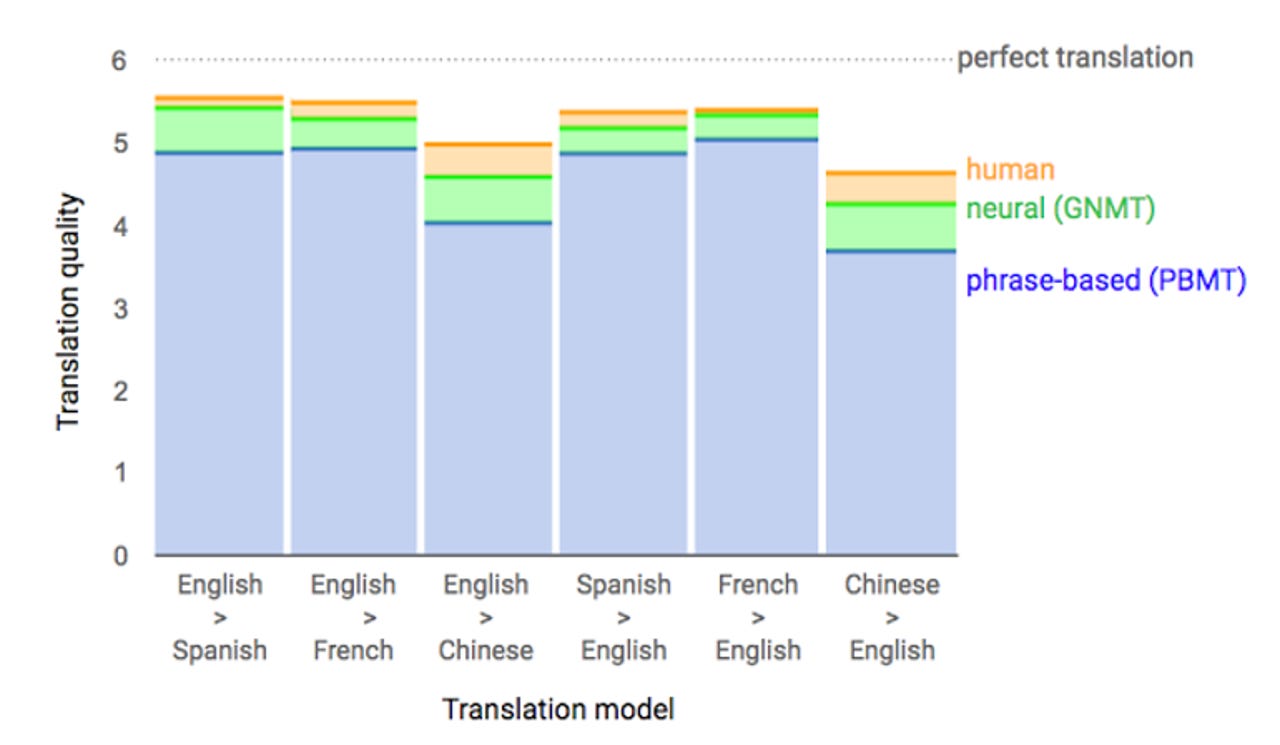Google Translate: 'This landmark update is our biggest single leap in 10 years'


Google says data from side-by-side evaluations, where human raters compare the quality of translations, shows the improvements achieved by Google Neural Machine Translation, or GNMT.
Google boasts that its latest update to Google Translate has given it the biggest leap of the past decade in natural language translation.
Google Translate might not be as good as humans at translating language, but the search giant's recent work using neural networks to improve speech recognition and computer vision has made it hard to beat in machine translation.
The latest update to Google Translate utilizes Google's Neural Machine Translation (NMT) system for translating phrases, which is rolling out to eight language pairs.
Google actually announced NMT in September in a paper describing how it's using neural networks to close the gap between human and machine translation. However, until now it had only switched on NMT for Chinese to English translations.
The system still makes some mistakes, such as dropping words or failing to understand a person's name, but it has allowed Google to cut errors by 55 to 85 percent in several languages.
It also improved Translate's ability for contextual translation by analyzing a phrase or paragraph rather than a single word to reconstruct a more grammatically correct and natural translation.
Google has now rolled out neural machine translation for eight language pairs "to and from English and French, German, Spanish, Portuguese, Chinese, Japanese, Korean, and Turkish". The feature is enabled in Google Search, as well as in the Translate app and website.
These language pairs cover 35 percent of Google Translate queries, but Google plans to eventually enable NMT support for 103 languages.
"With this update, Google Translate is improving more in a single leap than we've seen in the past 10 years combined," Google Translate product lead Barak Turovsky said.
Turovsky also notes that developers can also access its Google Cloud Platform Translation API to give their apps some of the features that enabled NMT.
Just like Microsoft, Google is betting the future of computing lies in machine learning and to woo new enterprise customers to its cloud platform, it announced the new Cloud Jobs API to help business match recruits with career openings.
Google also announced its new Google Cloud Machine Learning Group would be headed up top machine-learning researchers, Stanford professor Fei-Fei Lie, and Jia Li, formerly a top exec at Snapchat.